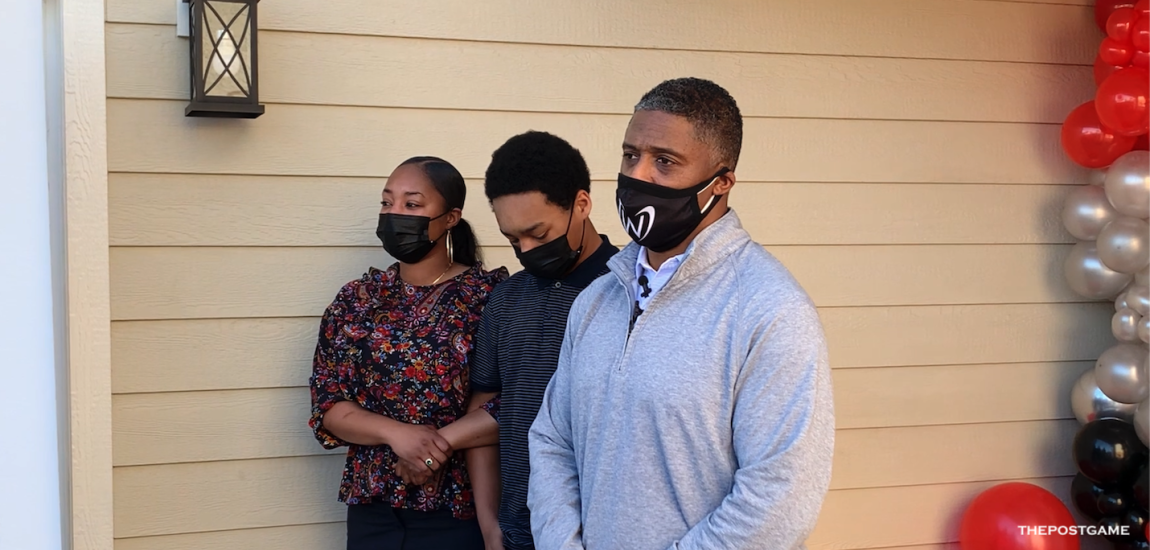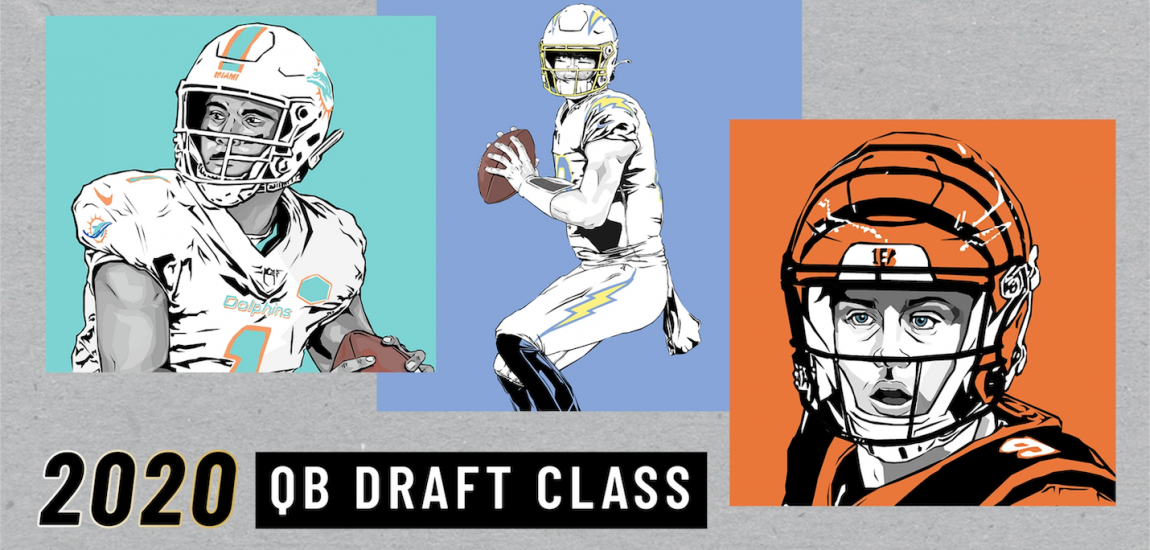
Raiders fans will never forget it. During the 2001 AFC championship game, New England quarterback Tom Brady dropped back to pass and was leveled from behind by Oakland cornerback Charles Woodson. The ball came loose, the Raiders recovered, and the game appeared to be over. That is, until an obscure NFL rule -- now known to almost every football fan as the "Brady Tuck Rule" -- overturned the fumble call and awarded the ball back to the Patriots, who went on to win not only the game, but that year's Super Bowl. (Oh yeah, and they launched a dynasty in the process.) From clutch catches to fourth-quarter comebacks, find out what Men’s Health ranked as the The 50 Greatest NFL Moments of All-Time.
No matter how much football you watch, you'd be forgiven if the intricacies of the NFL rulebook still surprise -- or infuriate -- you. As a former referee and Vice President of NFL Officiating, Fox Sports Rules Analyst Mike Pereira not only helped write the rules, but he fields questions every day from his 100,000+ (often-confused) Twitter followers.
Here, he breaks down the 10 most misunderstood NFL rules.
The 10 Most Misunderstood NFL Rules Slideshow

1. Hands To The Face
"Fans wonder why a running back can stiff-arm a defender in the facemask, but the defender isn't allowed to do likewise," Pereira says. "Actually, they can!" There are three distinct relationships on the football field that determine hand-face contact penalties, Pereira explains. They are: ball carrier-tackler, offensive lineman-defensive lineman, and receiver-defender. "Both ball carriers and their tacklers are allowed to touch and push each other in the facemask, but for any lineman, wide receiver, or their defenders, this should be flagged as illegal hands to the face," Pereira says. "And no one's allowed to grab, twist, or jerk the facemask, ball carriers included." Throw the bash of the year with these 7 Tips for a Killer Super Bowl Party.

2. Kicker Offsides
Watch almost any NFL kickoff, and you'll see the kicker plant his non-kicking foot beyond the football before he boots it. Why isn't that offsides? "That's one I get all the time," Pereira laughs. "The NFL has made an exception for soccer style kickers, which allows them to step beyond the ball during the kickoff." Play like an MVP in your backyard game. Here's How to Score Big in Snow Football.

3. Defenseless Players
With all the recent changes to personal foul and unnecessary roughness penalties, you're forgiven for losing track of who gets special protection. There are nine players who qualify as defenseless, Pereira says. Those are: A passer in the act of passing; a receiver in the act of catching; a kick returner in the act of catching; a runner on the ground after a play; a runner whose forward progress has been stopped; a quarterback after a turnover; a kicker during a kickoff; a player who is blindside blocked; and a player who is crack-back blocked. A defender or blocker is not allowed to hit any of those players in the head or neck area with their helmet, shoulder or forearm. Which bowls have the most noteworthy performances? Find out here with The Best Super Bowl Halftime Shows Ever.

4. Leading With Crown Of The Helmet
This one's easy: A player cannot lead with the crown or hairline of his helmet while making a tackle on a defenseless player. Period. "It's a penalty whether the tackler hits the defenseless player in the leg, chest, head -- doesn't matter," Pereira says. Get in shape like the pro Rob Gronkowski with The Gronk Workout.

5. Helmet-to-Helmet Contact
An important distinction from the last rule, and one Pereira says many fans don't grasp: "Unless the hit involves a defenseless player, helmet-to-helmet contact is not a penalty." That holds even if the tackler leads with the crown of his helmet. If a defender is tackling a ball carrier, which includes a quarterback who has left the pocket or a receiver who has completed a catch, then hits to the head are legal, Pereira says. Reminisce about the unforgettable ads that were bigger than the game itself. See The Top 10 Best Super Bowl Commercials of All-Time.

6. Catching the Ball: Part I
There are different rules depending on whether a receiver catches the ball while on his feet or falling to the ground, Pereira says. If a receiver's on his feet, it's not a catch until he has both feet down in bounds. "He also has to maintain control long enough to perform an act common to the game, which means he could pitch the ball, pass it, or move up field." That includes reaching the ball forward for a first down, Pereira adds. "If a receiver makes a catch and immediately sticks the ball forward to earn more yards, even if the ball is knocked out by a defender, that's a catch." Is your workout overkill? Discover how you can blast fat -- in almost no time -- with The Ultimate Two-Exercise Workout.

7. Catching the Ball: Part II
If a player is falling to the ground while completing a catch, things can get tricky. (Just ask Calvin Johnson.) When the player goes to the ground, he must "maintain control of the ball throughout the process of contacting the ground," the rulebook says. To maintain control, a "slight movement" of the ball is considered acceptable, even if the player has fallen out of bounds. "But if the receiver is still in the act of completing the catch, the ball cannot touch the ground at all, or move if the player has fallen out of bounds." Pereira says. "In those cases, it's not a catch." Host the greatest Super Bowl party of all time with these 21 Rules Every Super Bowl Host Must Follow from Men’s Health Guy Gourmet.

8. Coach's Challenges
These have been tweaked almost every offseason, so it's tough to keep up, Pereira says. The rules state each team has two challenges. If they use both and win both, they get a third. However, those challenges cannot be used to review a scoring play, a turnover, or any play inside the 2-minute warning, Pereira says. In those situations, reviews can only come from the replay booth. A few tricky distinctions: If a team is out of timeouts, theycannot challenge a play. And if a foul occurs that delays a play -- such as a defensive lineman kicking the ball in order to give his coach time to challenge -- the offending team cannot challenge the previous play, Pereira says. From Clooney to 'Cube, these stars go crazy for their team: The Biggest Celebrity Football Fans.

9. Booth Reviews
Announcers say all the time that every scoring play is reviewed, and that's true to some extent, Pereira says. But if nothing's in dispute, the game isn't delayed while the refs or replay official take a look. "The replay official in the booth has a button and he just buzzes down to let the refs know they're nothing to look at," Pereira says. But there's one very important distinction: If there's a near-score on the field, but the referees rule that there was no touchdown or made field goal, there cannot be a booth review outside the 2-minute warning without a coach's challenge. "If you're out of challenges or timeouts, and it's outside of the 2-minute warning, there's no review," Pereira says. Speaking of fumbles, check out the The Best (and Worst) Football Flicks of All Time.

10. The Quarterback Spike
When a QB spikes the ball to stop the game clock, why isn't that intentional grounding? "I get this one so much you wouldn't believe it," Pereira says. "The rule allows the quarterback, if he starts under center, to spike the ball to stop the clock. It does not allow the quarterback to throw the ball away to avoid a loss of yardage. Simple as that." Which teams have the sexiest supporters? Find out here: The Hottest NFL Cheerleaders.
-
Related
 Warrick Dunn's Foundation Helps 200th Single-Parent Family Become First-Time Homeowner
Warrick Dunn's Foundation Helps 200th Single-Parent Family Become First-Time Homeowner -
Related
 Burrow, Tagovailoa, Herbert: Brian Baldinger Analyzes QBs From 2020 Draft
Burrow, Tagovailoa, Herbert: Brian Baldinger Analyzes QBs From 2020 Draft -
Related
 Washington NFL 'Rule' On Presidential Elections Loses Steam In Snyder Era
Washington NFL 'Rule' On Presidential Elections Loses Steam In Snyder Era -
Related
 Cincinnati Bengals Virtual Tailgate
Cincinnati Bengals Virtual Tailgate
